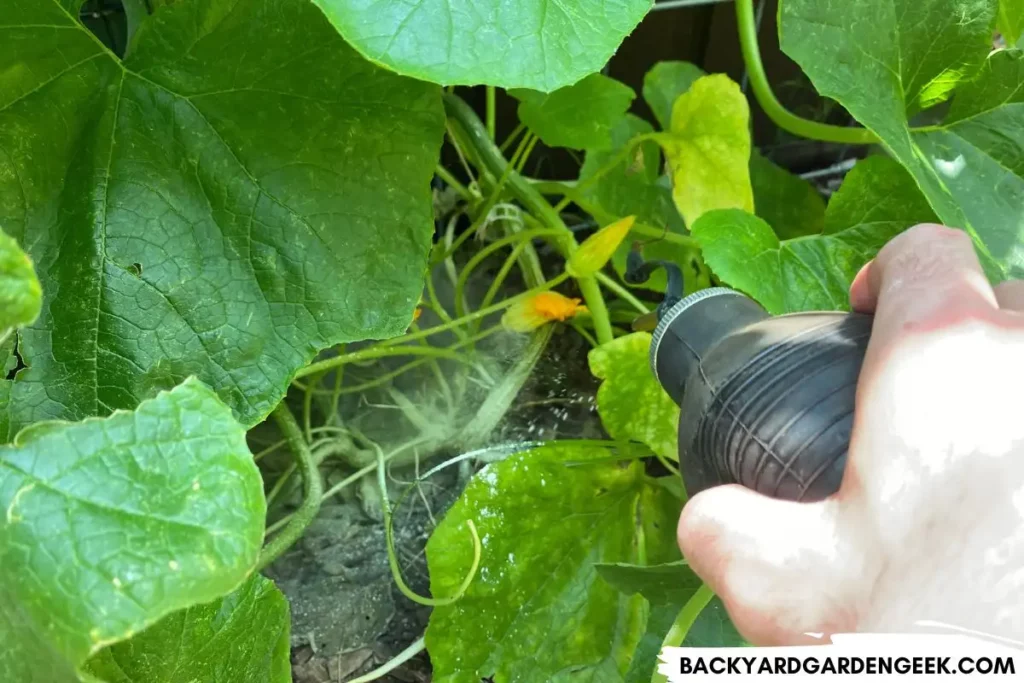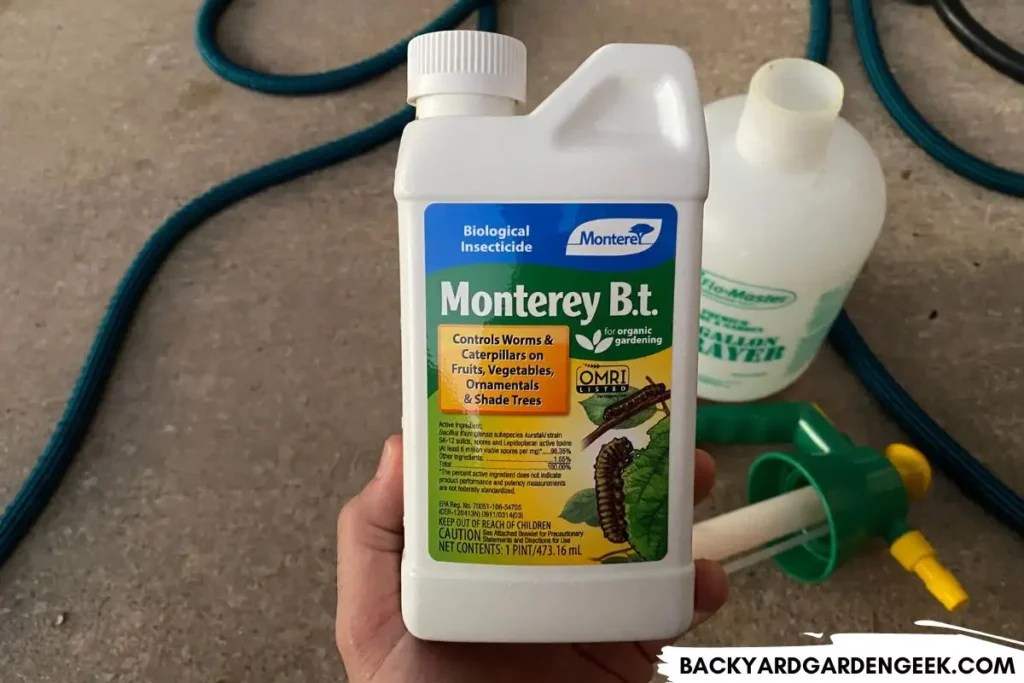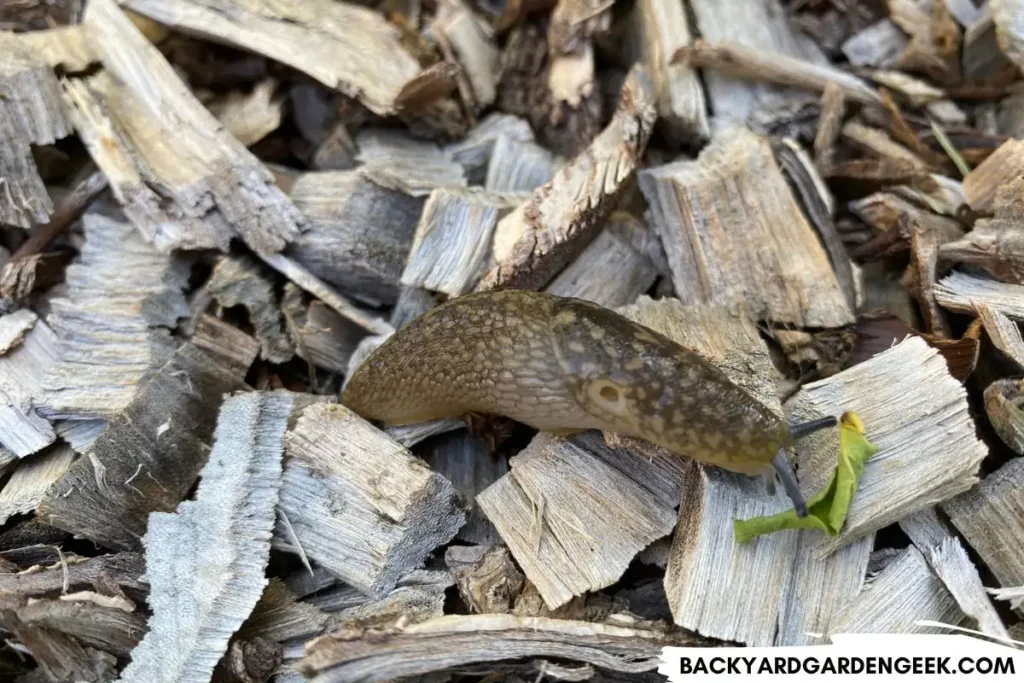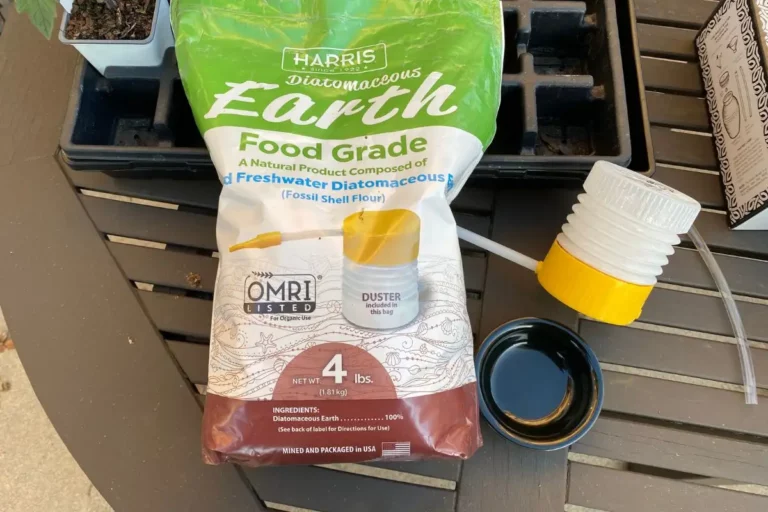4 Reasons Why Diatomaceous Earth Will Kill Bugs
Has anyone ever told you to use diatomaceous earth (DE) in your garden?
If so, you might have wondered what DE is and why this floury-looking substance will do anything at all to garden pests. Why does diatomaceous earth kill bugs?
Although harmless to humans and pets, diatomaceous earth kills bugs through physical abrasion and dehydration. DE’s sharp microscopic particles cut through insect exoskeletons, absorb the bugs’ protective lipids and bodily moisture, and cause dehydration and death within 12-48 hours.
To help you learn more about what diatomaceous earth is and how you can use it to protect your garden plants, I’ll cover the following important topics in this article:
- an overview of what diatomaceous earth is and the 4 main reasons why DE kills bugs.
- a list of the 50+ insect pests that DE will hinder, harm, or kill.
- a list of bugs that DE is not as effective against and why they can resist it.
By the end of this article, you’ll know quite a bit about diatomaceous earth and understand how you can use it to maintain a pest-free environment and around your home and garden.
And if you’re interested in doing what I do in my backyard garden, you’ll want to get your hands on these two products in particular:
Now that I’ve covered some basics, let’s look at why exactly DE kills off so many bugs!
1. DE Sticks to Bugs’ Exoskeletons

One of the nice things about diatomaceous earth is that it sticks to bugs easily. acts
Imagine a garden where you’ve recently applied DE. The bugs that inhabit or visit this space, whether they’re crawlers like aphids or flying insects like leaf-footed bugs, have a high chance of coming into contact with DE, depending on your coverage area.
Because it’s powdery, DE clings to the surface of plant foliage, flowers, and soil, creating a thin layer of bug-killing particles that’ll stick to most bugs that come across it.
What makes DE so effective is the fact that it’s incredibly absorptive. Insect exoskeletons are covered in a thin layer of wax (known as lipids), so when a bug crawls over a DE-treated surface, the DE particles attach themselves to the lipids.
The same goes for any flying bugs that brush against DE-covered plants. They’ll invariably get DE on them if they do so.
This sticking process is a crucial first step in understanding how DE kills bugs.
Without this adhesion, the other destructive properties of DE—such as its ability to slice open and dehydrate bugs—wouldn’t come into play. The bugs would simply bypass the DE without any harm.
But once a bug comes into contact with DE particles, that sets into motion a chain of destructive events, beginning with the abrasion of the bug’s protective exoskeleton. This is why the initial attachment is the linchpin that makes it possible for DE to do what it does.
2. DE Cuts Open and Penetrates Bugs’ Exoskeletons
Diatomaceous earth looks and feels like a soft powder, similar to the kind you’d buy at the grocery store. It looks and feels that way to all mammals, birds, fish, and reptiles.
But to insects, it’s an entirely different story!
DE is composed of ancient fossilized diatoms, which are single-celled algae that have silica-based cells.

When viewed under a microscope inspection, DE isn’t smooth at all. DE particles are instead ringed with sharp edges and jagged contours. When bugs come into contact with DE, these edges act like tiny shards of glass, slicing into their exoskeletons.
Bugs’ exoskeletons might be tough—if we’re talking about beetles, grasshoppers, roaches, and other such insects—but they’re not impenetrable. They’re made of a material called chitin, which, while strong, can still be breached by the sharp edges of DE particles.
However, the effectiveness of DE in cutting into bugs’ exoskeletons can vary greatly between bug species.
Larger insects or those with particularly robust exoskeletons might be able to withstand brief encounters with DE particles. For instance, mature beetles or certain types of roaches can often survive short DE exposure due to their size and stronger exoskeletons.
On the other hand, smaller insects (like aphids, spider mites, or young larvae) are much more susceptible. Their thinner exoskeletons provide less resistance to DE’s cutting abilities, making them easier targets.
This is why DE often works more effectively against some bugs than others.
3. DE Absorbs Moisture and Dehydrates Bugs
But it’s at this point, after DE particles have come into contact with and cut a bug’s exoskeleton, that DE really shines as an organic insecticidal product.
After slicing through the chitin, DE particles start interacting with the waxy and fatty layers that envelop bugs’ bodies. The layer, known as the cuticle, is rich in lipids, which are a type of fat that serves several crucial roles in bugs’ physiology.
The microscopic structure of DE particles makes them extremely absorbent, so as soon as they begin degrading bugs’ exoskeletons, they begin to absorb the lipids from the protective cuticle layer, disrupting its function. As the lipid layer gets depleted, the bug’s ability to retain moisture is impaired, leading to rapid dehydration.
The dehydration process can vary in duration depending on the size and type of bug as well as environmental conditions.
Generally, bugs begin to dehydrate within 6-12 hours of exposure to DE, with death following anywhere from 12 to 48 hours. Smaller insects lose moisture quicker and therefore dehydrate faster than larger ones, but larger bugs will die off as well once DE begins to work on them.
As you can tell, DE might look harmless, but it’s deadly to insects that come into contact with its jagged, absorptive particles.
4. DE Particles Don’t Expire (But Must Be Reapplied)
Diatomaceous earth possesses one final quality that helps its kill off bugs: It doesn’t expire.
Unlike chemical insecticides, DE doesn’t degrade over time because it isn’t subject to chemical reactions or breakdowns.
Instead, it maintains its lethal sharpness and absorbency indefinitely, so long as it’s kept dry. If left undisturbed, the microscopic particles of DE can remain effective for days or even weeks.
(Theoretically, DE particles could remain effective indefinitely, but as you know, they’re exposed to all kinds of rainfall, watering, and heavy dews when applied in the garden, so regular reapplications are necessary.)
Water, in particular, will render DE ineffective.
When they get wet, DE particles clump together, losing their ability to adhere to bugs or cut into their exoskeletons.
This is why DE’s effectiveness diminishes almost entirely in damp conditions, such as after a rainfall, a garden watering, or heavy morning dews.
This means that reapplication is necessary post-water exposure to maintain an effective barrier against pests.

Even though DE won’t expire, you should reapply it once every 5-7 days during infestations, even under dry conditions.
Here’s an article I’ve written about how to spread DE easily and effectively.
Wind, humidity, and garden critters will all contribute to the dispersal of DE particles and the degradation of your DE coverage area over time.
As long as you store your bag of DE properly—making sure to seal it tight and tuck it away in a garage or shed where it’ll never get exposed to water—diatomaceous earth will be a helpful, cost-effective way to get rid of garden infestations.
What Bugs Does Diatomaceous Earth Kill?
Diatomaceous earth will harm or kill practically any bug that’s covered in a protective exoskeleton.
By penetrating and disrupting this protective outer layer, DE causes the bugs to dehydrate, eventually leading to their death, as I noted above.
To make things simple for you, here’s a long list of the many garden pests that DE can effectively control:
- Ants
- Aphids
- Armyworms
- Asparagus Beetles
- Bagworms
- Bark Beetles
- Bed Bugs
- Blister Beetles
- Boll Weevils
- Borers
- Boxelder Bugs
- Cabbage Worms
- Caterpillars
- Chinch Bugs
- Colorado Potato Beetles
- Corn Earworms
- Cucumber Beetles
- Cutworms
- Earwigs
- Flea Beetles
- Flies
- Fruit Flies
- Fungus Gnats
- Grasshoppers
- Grubs
- Harlequin Bugs
- Hornworms
- Japanese Beetles
- June Bugs
- Leaf Miners
- Lice
- Mealybugs
- Millipedes
- Moths
- Pill Bugs
- Psyllids
- Roaches
- Root Knot Nematodes
- Sawflies
- Silverfish
- Slugs
- Snails
- Spider Mites
- Squash Bugs
- Stink Bugs
- Thrips
- Ticks
- Weevils
- Whiteflies
Now that you’ve got a sense of DE’s bug-fighting abilities, I’d like to share a few stories where DE got me out of a jam.
Last year, I had a severe armyworm infestation among my collards and kale. I mixed up a Bacillus thuringiensis (BT) spray, but after a few days, I realized that my bottle of BT had been in storage too long and likely wasn’t doing what it was supposed to do.

Thankfully, I had a bag of DE in my garage, so I immediately went for it.
(I prefer the Harris brand 10-pound bags since they’re cost-effective).
It was windy outside, so I put on protective gear before applying DE. After that, I made sure to inspect my plants, applied DE to the undersides of the leaves, then got online and bought a new bottle of BT to have on hand for next time.
Luckily for me, the DE did the trick, eliminating the pests and saving my leafy greens.
A year or so prior, my cherry tomato plants were attacked by a relentless wave of flea beetles.
I tried soapy water sprays and neem oil—since I’ve had lots of success using them against aphids and spider mites—but they didn’t do much to stop the flea beetles.
At one point, flea beetles were all over 1-2 of my cherry tomato plants, so I dusted the entire plant with DE. I hated to do that out of concern that I’d harm bees and butterflies, ladybugs, or other beneficial insects, but if I didn’t stop the flea beetles, my plants were goners.
Once again, DE took care of my problem, and the flea beetles disappeared after a few days. My plants were in sad shape, but after a few more weeks of care and attention, they started producing tomatoes again, thanks to the helpful effects of diatomaceous earth.
What Bugs Does Diatomaceous Earth NOT Kill?
While diatomaceous earth is potent against numerous pests, it’s not a panacea for all of your bug problems.
Some bugs are less susceptible or even immune to DE, usually due to their size, speed, or biological traits. This is important to understand when it comes to pest management in your garden or home.
A variety of large, mature beetles resist the effects of DE. Their strong exoskeletons and their overall size mean they can endure the abrasive action of DE.
Similarly, larger roaches, along with mature leaf-footed bugs, squash bugs, and stink bugs, can sometimes withstand brief exposures to DE due to their size.
Speedy flyers like flies and wasps can often evade DE since it’s only effective if they’re directly sprayed.
Mosquitoes, too, tend not to be affected due to their flying ability and their rapid life cycles.
Some beneficial bugs, such as ladybugs, can survive minor exposure to DE, which is helpful since they’re a huge help to gardens by preying on harmful pests. However, if they get covered in it, DE will likely kill them.
Pill bugs, which I referred to as roly-polies when I was a child, are somewhat resilient due to their hard exoskeletons. They can also curl up quickly, which can minimize their surface area.
Likewise, slugs and snails are not affected by DE since they’re technically mollusks, not insects. They don’t have exoskeletons. Instead, they have a mucus layer that can shield them from damage and dehydration.

Finally, earthworms remain mostly unaffected by DE. They don’t necessarily like it—and they’ll expel it quickly if they ingest any DE that’s been mixed into the soil—but it doesn’t harm them, as far as I can tell.
Now that you know how diatomaceous earth works, which bugs it works against, and which bugs have some resistance to it, I hope you’ll get your hands on a bag of DE, store it in a nice moisture-free place, and pull it out whenever you’ve got an infestation on your hands.
Along with soapy water and neem oil, DE is one of my go-to pest management products, so I hope you’ll give it a try this year!
Want to Learn More?
If you’d like to continue learning about diatomaceous earth, I recommend these related articles:
- Can Diatomaceous Earth Harm Plants? What Scientists Say
- Can You Put Too Much Diatomaceous Earth on Plants?
- How Long Does Diatomaceous Earth Protect Your Plants
- Killing Ants with Diatomaceous Earth in 7 Easy Steps
- Using Diatomaceous Earth: Do I Need to Wear a Mask?
- Using Diatomaceous Earth as a Fertilizer: Will DE Help?






